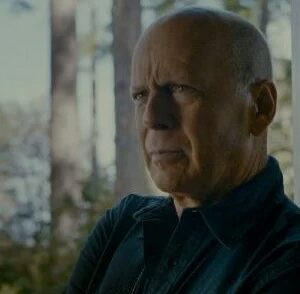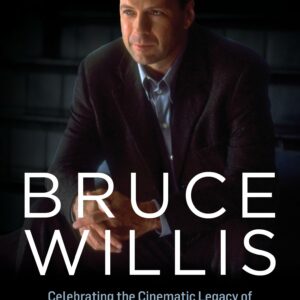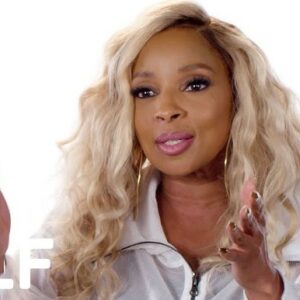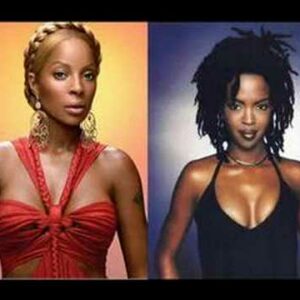Cillian Murphy’s acting career stands as a testament to versatility and depth, with a body of work that spans multiple genres, from hard-hitting dramas to pulse-pounding blockbusters. His chameleon-like ability to inhabit characters with emotional intensity and psychological nuance makes him one of the most sought-after actors of his generation. Whether portraying deeply troubled men grappling with their inner demons or antiheroes navigating moral ambiguity, Murphy’s craft speaks to his profound understanding of human complexity.
From the gritty streets of Peaky Blinders to the dystopian landscapes of 28 Days Later, Murphy’s roles have showcased his range. His characters don’t just act within their settings but help define them, giving voice to larger societal questions through subtle performances that resonate with audiences long after the credits roll.
Murphy’s artistic journey mirrors that of an actor continuously challenging himself, never confined to any one genre or character type. He brings a meticulous approach to each performance, taking on roles that demand emotional and intellectual rigor. Whether as a lead or supporting character, his presence is undeniable, marking a shift in the viewer’s experience of the film or series.
Iconic Roles That Define Cultural Movements
Few actors can lay claim to iconic characters that define entire cultural movements, but Cillian Murphy has managed to do so multiple times in his career. His portrayal of Tommy Shelby in Peaky Blinders has become emblematic of power, rebellion, and a new model of masculinity. As the ruthless yet introspective leader of the Shelby family, Murphy transformed what could have been a conventional gangster role into something far more profound—Tommy is not just a crime boss, he’s a war veteran, a survivor of trauma, and a man constantly at odds with himself and the world around him. Shelby’s calculated stoicism, matched with his bursts of violent desperation, speaks to a postmodern idea of masculinity that is raw, fractured, and introspective.
On the other end of the spectrum is Murphy’s portrayal of Jonathan Crane, aka the Scarecrow, in The Dark Knight Trilogy. In contrast to Tommy Shelby’s more grounded realism, Murphy’s Scarecrow thrives in a world of psychological terror. As one of Batman’s most disturbing antagonists, his eerie, intellectual malevolence showcases Murphy’s ability to inhabit a darker, more exaggerated space without losing the humanity beneath the villainy. In a film franchise known for its philosophical musings on justice and chaos, Murphy’s Scarecrow becomes a representation of fear itself—an abstract concept brought to life through the actor’s chilling performance.
Both characters—Tommy Shelby and the Scarecrow—exist within larger cultural conversations about power, morality, and rebellion. Through these roles, Murphy taps into contemporary anxieties about the cost of ambition, the scars of war, and the societal need for control versus chaos. His performances don’t just entertain; they provoke reflection on the nature of authority and resistance.
Influence on Pop Culture Trends
Cillian Murphy’s characters have transcended the screen, becoming part of pop culture in ways that few actors achieve. Tommy Shelby, for instance, has become a touchstone for discussions around fashion, masculinity, and the anti-hero archetype. Shelby’s sharply tailored suits, combined with his undercut hairstyle, have inspired fashion trends that permeate everything from high-end runway shows to streetwear. Men who admire his stoic yet emotionally complex demeanor emulate his style as a form of silent rebellion against conventional masculinity. In essence, Shelby has become a template for a new kind of man—strong but sensitive, powerful yet haunted by vulnerability.
In a time when pop culture reveres the anti-hero, Murphy’s roles often embody this complex archetype. Characters like Tommy Shelby and the Scarecrow speak to a cultural fascination with flawed, morally ambiguous figures. These men are not bound by traditional heroic ideals; instead, they operate in the gray spaces of morality, appealing to an audience that sees the world in shades of complexity rather than black and white.
Murphy’s influence can also be seen in the creation of dedicated fan communities and the proliferation of memes. Tommy Shelby’s many one-liners, his cigarette-smoking silhouette, and his intense stare have become internet staples. Memes of his character circulate as shorthand for expressing everything from existential angst to the pressures of leadership, reflecting how deeply his portrayal resonates with modern audiences.
His Contribution to Modern Storytelling
Cillian Murphy doesn’t just play roles; he immerses himself in the psychological and emotional depths of his characters. This dedication to the craft makes his contributions to modern storytelling significant. His characters are often mirrors reflecting society’s deeper social and psychological themes, from the fear of personal failure to the search for meaning in chaotic worlds. Through Murphy’s performances, audiences are invited to explore their own anxieties, aspirations, and the moral dilemmas they face in a rapidly changing world.
Take his role in Peaky Blinders, for example. Tommy Shelby’s evolution over the series parallels the post-World War I disillusionment with power structures, nationalism, and the notion of invincibility. In 28 Days Later, Murphy’s portrayal of a survivor in a post-apocalyptic world explores the fragility of human civilization and the brutal lengths people will go to in order to survive. The emotional weight Murphy brings to these roles allows audiences to experience these stories not just as entertainment, but as meditations on the human condition.
Murphy’s choice of projects further emphasizes his contribution to layered, complex storytelling. He gravitates toward roles that delve into the darkest corners of the human psyche, often playing characters grappling with their sense of self and the moral choices they face. These narratives resonate in a world where personal identity, ethical dilemmas, and societal anxieties are at the forefront of public discourse.
Evolution of Male Archetypes in Cinema
Murphy’s career is emblematic of a broader evolution in how male characters are portrayed in cinema. Traditionally, male leads were expected to embody ideals of strength, stoicism, and dominance—traits that rarely allowed for vulnerability or emotional complexity. However, Murphy has made a career out of challenging these archetypes, offering instead a more nuanced representation of masculinity that blends power with fragility, control with self-doubt.
Tommy Shelby is the quintessential example of this. He is a powerful man, but he is also deeply flawed, carrying the weight of his traumas like a shroud. The fact that Shelby is often portrayed as a man on the edge of breaking down adds depth to the character that resonates with modern audiences, who are increasingly aware of the mental health struggles men face but are often conditioned to hide.
In his portrayal of characters like Robert Fischer in Inception and Thomas Tipton in Anthropoid, Murphy brings similar layers of emotional complexity, challenging the notion of the infallible male hero. His characters are often powerful but fragile, driven by both ambition and fear. They are men who are not afraid to confront their inner demons, even when that confrontation leads to more questions than answers.
This evolution of the male archetype in cinema is critical in shaping modern narratives around masculinity. Murphy’s performances highlight the importance of vulnerability and introspection, pushing back against toxic stereotypes that equate masculinity solely with dominance and control. In doing so, he opens up space for a broader conversation about what it means to be a man in contemporary society—one that embraces complexity, contradiction, and emotional depth.
Conclusion
Cillian Murphy’s acting career is a journey through the landscapes of power, morality, and identity. His roles challenge traditional notions of heroism and masculinity, offering a new model for what it means to be a man in the 21st century. Through his performances, Murphy has not only shaped the stories in which he participates but also influenced broader cultural trends, from fashion to the evolving archetypes of male characters in cinema. His ability to inhabit deeply complex roles makes him a vital voice in modern storytelling, one that continues to resonate with audiences around the world.





